Finally! A Porch Garden That Won’t Die On You
I’ve spent a lot of my life helping people with their gardens, from huge landscapes to tiny apartment balconies, and I’ve learned one thing is always true: people just want to be surrounded by a bit of life. A splash of green next to the front door or some color on a concrete slab can completely transform a space. But, oh yeah, I’ve seen the other side, too. The sad, wilted pots and the frustration of people who feel like they’ve failed. The number one request I get is for “low-maintenance” plants. It’s a fair ask, but let’s be honest, that term is a bit of a fib. It doesn’t mean “no-maintenance.” It really means picking the right plant for the right spot—one that can handle a little neglect and won’t throw a fit if you forget to water it once in a while.
In this article
This isn’t about chasing the latest trends. This is about the foundational stuff that really works. It’s about getting why you’re doing what you’re doing. We’ll walk through picking the right pot, mixing up the perfect soil, and choosing plants that are tough as nails and will actually be happy on your porch or balcony. This is all about setting you up for a win, so your little garden becomes a source of pride, not another chore.
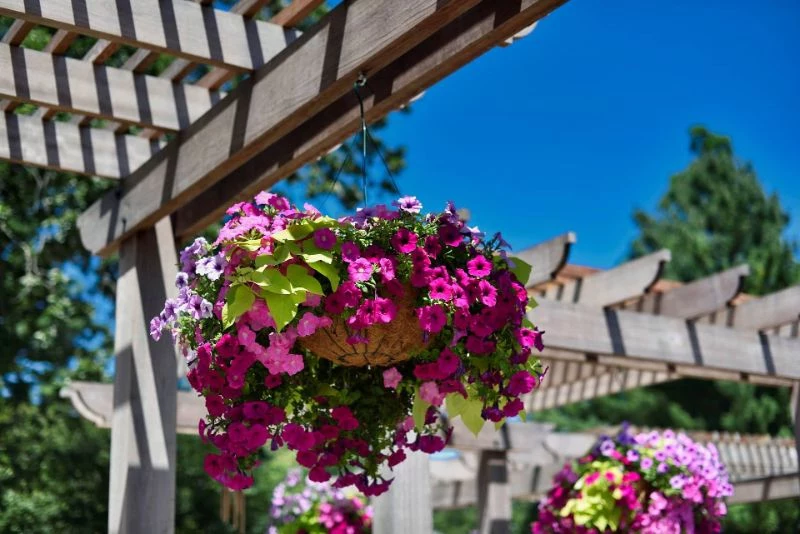
Getting the Foundation Right (This is 90% of the Battle)
Before we even dream about flowers, we have to talk about the home you’re putting them in. A pot is a closed system. Unlike plants in the ground, the roots can’t go searching for water or food. They are completely at your mercy. Get this part right, and everything else gets a whole lot easier.
Let It Drain! Choosing the Right Pot
The single biggest mistake I see, time and time again, is a pot with no drainage. Every single container must have holes in the bottom. Period. Without them, water just pools at the base, the roots can’t breathe, and you get root rot. It’s a nasty fungal issue that’s almost impossible to fix. A tell-tale sign is when the soil starts to smell sour, like a swamp—that means the roots are already in big trouble.
The material your pot is made from matters, too:
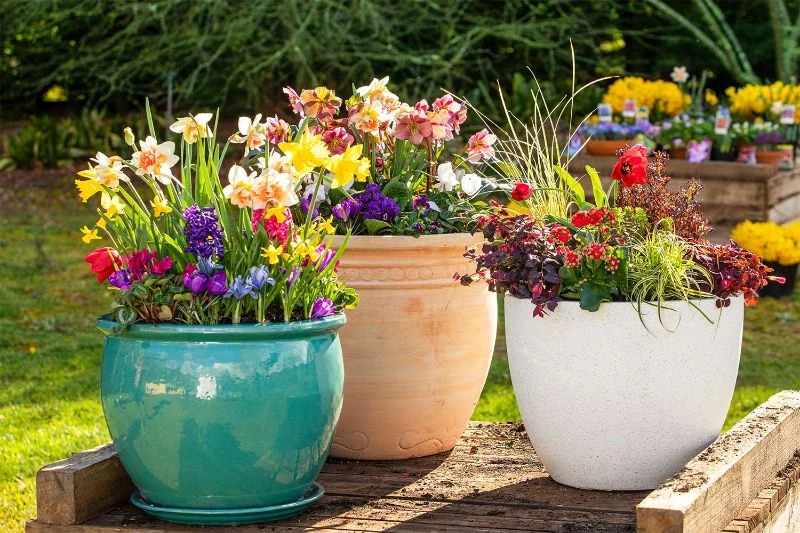
- Terracotta (the classic unglazed clay): I love these for a lot of plants. The clay is porous, meaning air and water can move through the sides. This is fantastic for preventing soggy soil. The catch? They dry out super fast in hot, sunny spots and can crack in a hard freeze if you leave them full of wet soil. They’re also on the heavy side.
- Glazed Ceramic: These hold moisture way longer than terracotta, which is great for thirsty plants. Plus, they come in a zillion colors and styles. A quick tip: Sometimes the glaze can clog the drainage hole. I’m not afraid to take a drill with a masonry bit and carefully widen it a bit to be safe.
- Plastic or Fiberglass: These are your best friends if weight is a concern, like on an older balcony. They’re lightweight, pretty affordable, and amazing at holding moisture. The downside is that they don’t breathe at all. You have to be extra careful not to overwater. And a heads-up: dark-colored plastic pots can get seriously hot in direct sun, potentially cooking the roots inside.
By the way, on the topic of weight—I once consulted on a project where a client had these massive, gorgeous terracotta pots on an old apartment balcony. We brought in a structural engineer, and sure enough, the combined weight of the pots filled with wet soil was way over the balcony’s load rating. For any pot bigger than 20 inches across on a raised deck or balcony, I always recommend lightweight fiberglass and a soil mix with lots of perlite to keep the weight down.
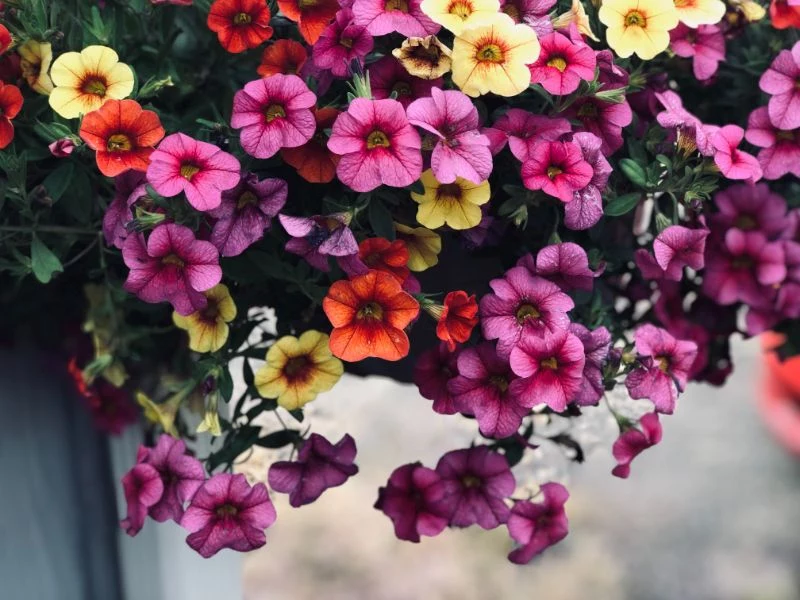
The Secret Sauce: Mixing Your Own Potting Soil
Sure, you can buy bagged potting mix from the store, and it’s fine. But for truly great results, I always mix my own. It’s actually cheaper in the long run and you can customize it. But please, never, EVER use soil from your garden. It’s way too dense, full of weed seeds and pests, and it will compact into a solid brick in a pot.
Here’s my all-purpose recipe that works for about 80% of plants:
- 2 parts Peat Moss or Coco Coir: This is the base that holds moisture. Coco coir, which you can buy as a compressed brick for about $12, is a great sustainable alternative and is easier to re-wet if it ever dries out completely.
- 1 part Perlite or Pumice: These are the little white, lightweight volcanic rocks. They are absolutely essential for drainage and aeration, creating air pockets so roots can breathe. A small bag costs around $10. Do not skip this!
- 1 part Compost or Worm Castings: This is the food. A bag of good-quality compost will run you about $8 and provides a slow release of nutrients for healthy plants.
So for around $30, you can get the ingredients to make a huge batch of custom, high-end soil. Compare that to a single large bag of a premium pre-made mix, which can easily cost $25. When I say ‘parts,’ by the way, don’t overthink it. Just use the same container for everything—a yogurt cup, a coffee can, a trowel, whatever. For a small project, a 1-quart yogurt container is a perfect ‘part’. Mixing it all in a wheelbarrow or on a tarp only takes about 10 minutes, and it’s oddly satisfying.
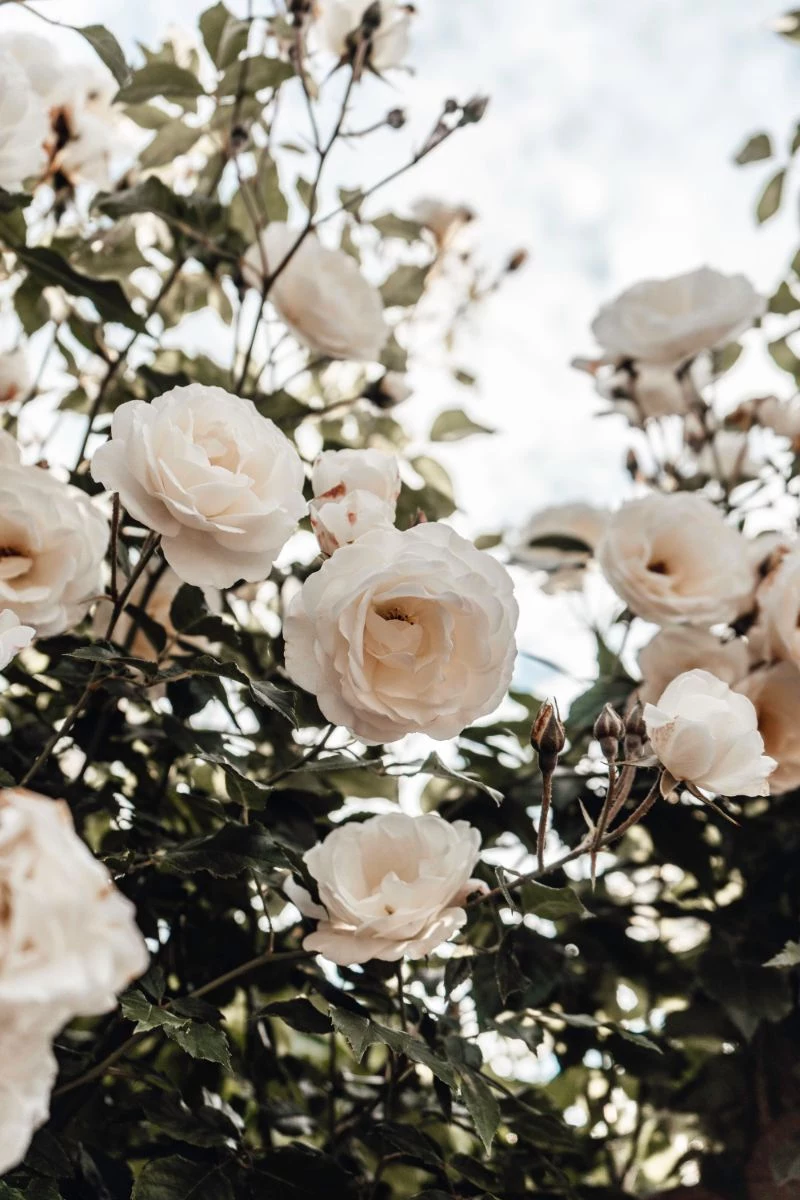
Your First Foolproof Pot: A No-Fail Recipe
Feeling overwhelmed? I get it. Let’s start with one guaranteed win. This is the perfect project for an absolute beginner to build some confidence.
Here’s your shopping list:
- The Pot: One 12- to 14-inch terracotta pot. It’s classic, breathes well, and costs about $15-$20 at a place like Home Depot or a local garden center.
- The Plant: One Lantana plant, especially from a modern series like ‘Bandana’ or ‘Luscious’. They are heat-loving, flower-producing machines and cost around $7.
- The Soil: Your DIY all-purpose mix we just talked about.
That’s it. For under $50 (with tons of soil left over), you have a beautiful, vibrant pot that will attract butterflies and look great all summer. Just place it in a spot that gets at least 6 hours of sun and water it deeply whenever your finger, pushed two inches into the soil, feels dry.
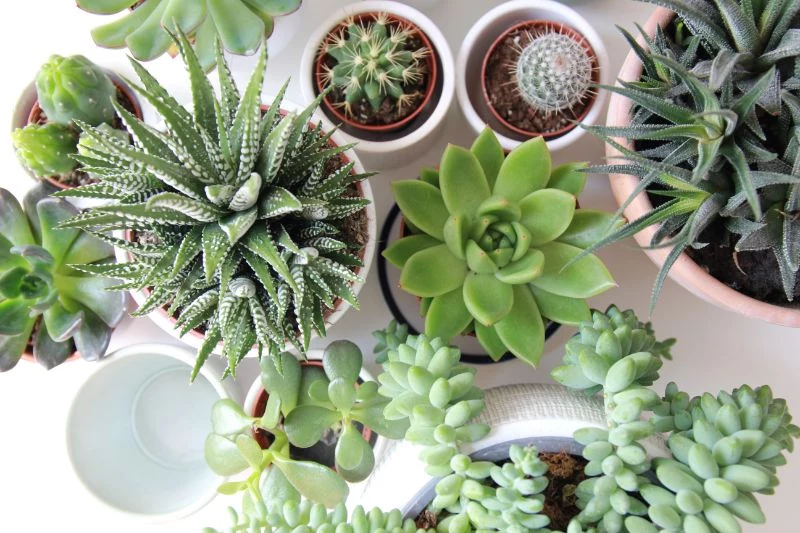
Picking Plants Like a Pro
I’ll never forget the time I spent a small fortune on beautiful, delicate ferns and put them on my west-facing patio—a spot I now affectionately call the ‘death-trap’. They were crispy in two days. That expensive failure taught me the most important lesson in gardening: light is everything. Before you buy a single plant, you have to honestly assess your space. Sit out there with a coffee at different times of the day. Is it…
- Full Sun? This means 6 or more hours of direct, blazing sun. Think south or west-facing spots.
- Partial Sun/Shade? This is the sweet spot, with about 3 to 6 hours of sun, usually gentle morning or late afternoon light. An east-facing spot is a perfect example.
- Full Shade? Less than 3 hours of direct sun, or maybe just dappled light all day under an overhang. North-facing porches often fall into this category.
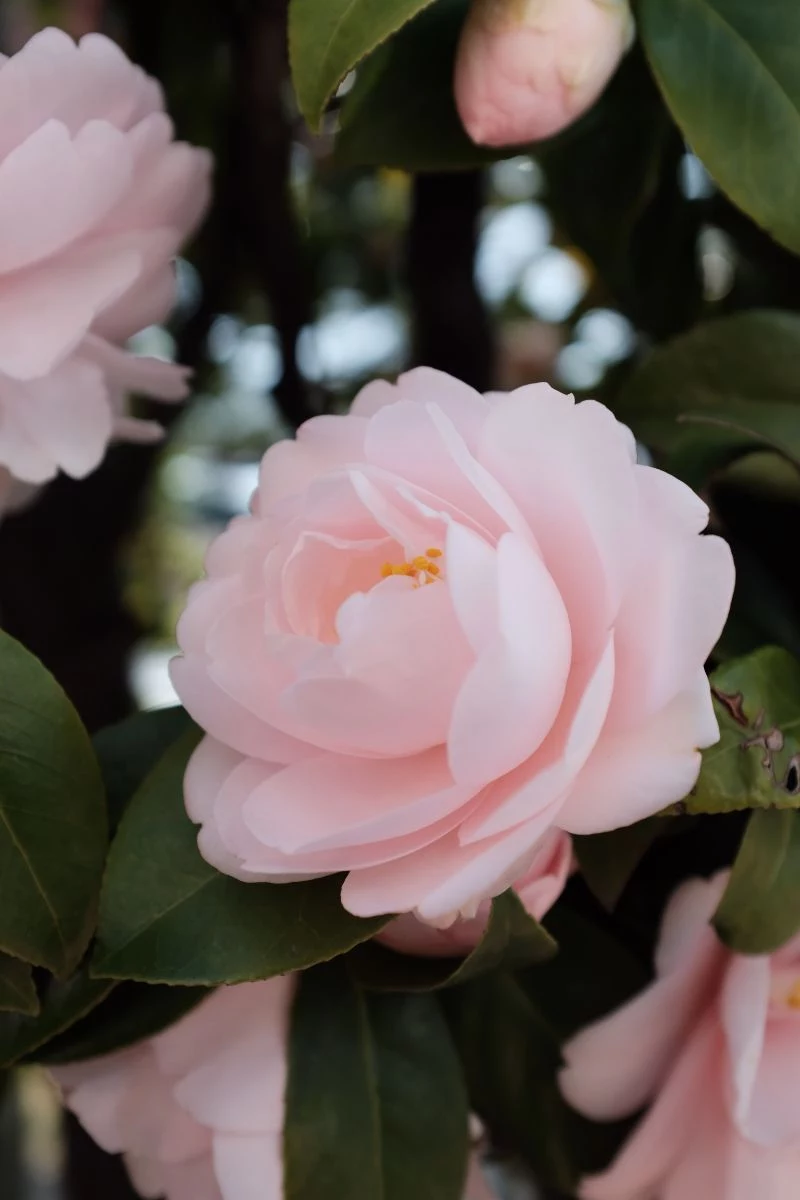
My Go-To Plants for Hot, Sunny Spots
These plants are tough. They can take the heat and won’t hold a grudge if you’re a day late with the water.
1. Lantana: If you want a non-stop flower factory that laughs at 100-degree days, this is it. They come in fiery mixes of yellow, orange, and red, and butterflies absolutely love them. Modern varieties are bred to be sterile, so they just keep blooming without setting seed. They do best in a bigger pot (at least 5 gallons) and a deep watering when the soil is dry to the touch.
2. Succulents (like Echeveria and Sedum): The poster children for low-maintenance, but they have one non-negotiable rule: do not overwater them. Use the “soak and dry” method. Water the pot until it runs out the bottom, then leave it alone until the soil is bone dry. For this, you’ll want to adjust your soil mix to have sharper drainage: try 1 part coco coir, 2 parts perlite, and 1 part compost.
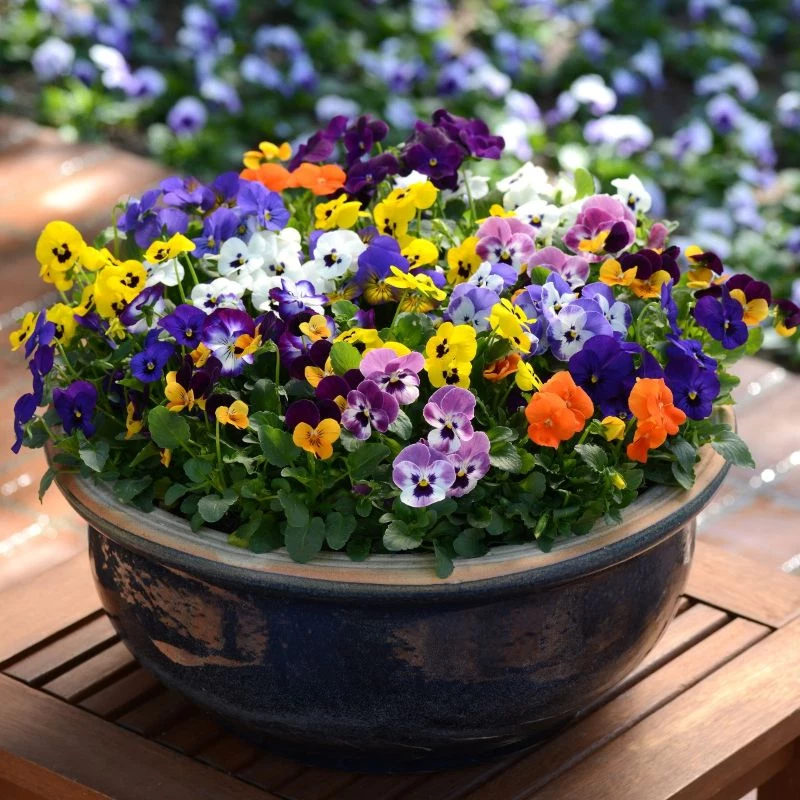
3. Modern Petunias (like ‘Supertunia’ or ‘Wave’ types): Forget the fussy petunias of the past that needed constant primping. Today’s hybrids are workhorses that bloom from spring to frost with no deadheading needed. Their one demand is food. They are very hungry. I mix a slow-release granular fertilizer into the soil when planting, then give them a liquid feed every couple of weeks. A quick tip on fertilizer: when a label says use at ‘half-strength,’ it just means if the box says to mix 1 tablespoon per gallon, you use half a tablespoon. It’s that simple. This feeding routine is the secret to an avalanche of flowers all season.
My Top Picks for Shady Spots
Shade isn’t a curse! It’s an opportunity to play with cool textures and subtle colors.
1. Hosta: The undisputed king of the shade, hostas are stunning in pots. They’re all about the magnificent leaves, which come in every shade of green, blue, and gold. A single large hosta can be a breathtaking centerpiece. Their main enemy is slugs. A simple trick is to put a ring of copper tape around the rim of your pot; for some reason, they won’t cross it. They die back to the ground in winter, which is totally normal.

2. Heuchera (Coral Bells): For year-round color in the shade, nothing beats Heuchera. The show is their foliage, which comes in incredible shades of deep purple, lime green, and rich amber. They form neat mounds and look good even through most of the winter in milder climates. They just need well-drained soil because they hate having soggy roots.
3. Japanese Forest Grass: This is one of the most elegant plants you can grow in a container. It has a soft, cascading habit that looks like a waterfall of green spilling over the edge of the pot. It provides movement and texture that is a perfect contrast to broad-leafed plants like hostas. It does prefer consistently moist soil, so it’s not as drought-tolerant as others, but in a shady spot, that’s usually not a problem.
Bringing It All Together
A really great container design has interest all year, not just in the summer. I always include a few evergreen plants to act as the “bones” of the arrangement.
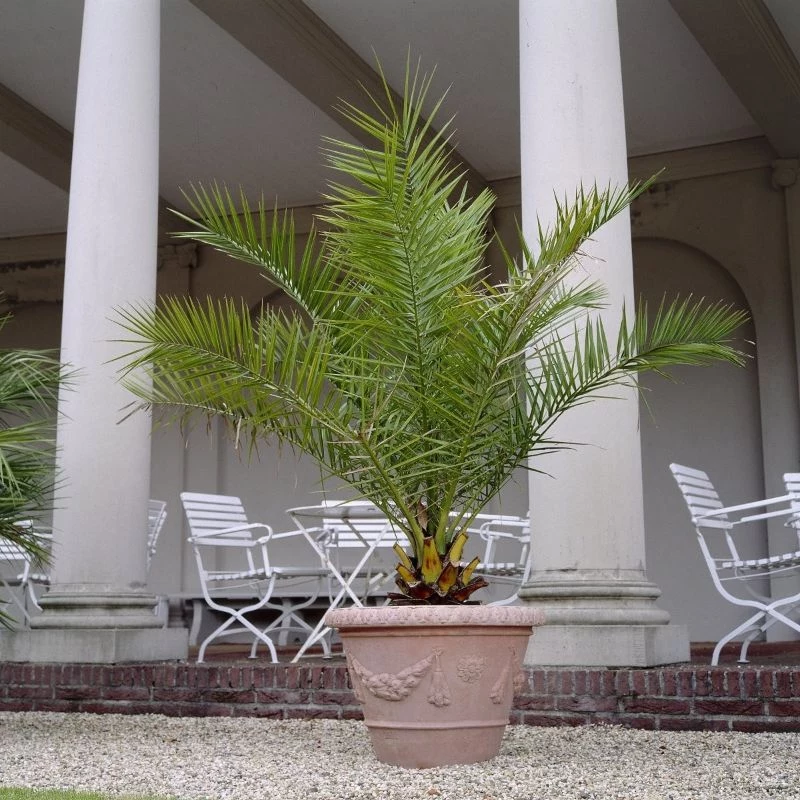
Things like a Dwarf Boxwood or a Dwarf Alberta Spruce provide a formal structure that looks great even in the dead of winter. They serve as a perfect green backdrop for colorful flowers you can swap out with the seasons. Depending on where you live, your choices might change. If I were setting up a porch in a hot, dry climate, I’d lean on glazed pots to conserve water and use plants like Bougainvillea. In a cool, rainy area, I’d be all about terracotta for better drainage and plants that love those conditions, like ferns and hostas. In those damp climates, it’s also a great idea to lift your pots off the ground with ‘pot feet’ to improve air circulation and prevent rot. You can buy little risers, or just use flat-ish rocks, wine corks, or even plastic bottle caps. Anything works!
Watering, Feeding, and Fixing Problems
The best tool for checking soil moisture is your finger. Stick it two inches deep. If it feels dry, it’s time to water. And when you water, do it thoroughly until it runs out the bottom. This encourages deep, strong roots. For feeding, think of it this way: the slow-release granules in the soil are like a daily multivitamin, and the occasional liquid feed is like an energy drink before a big race.
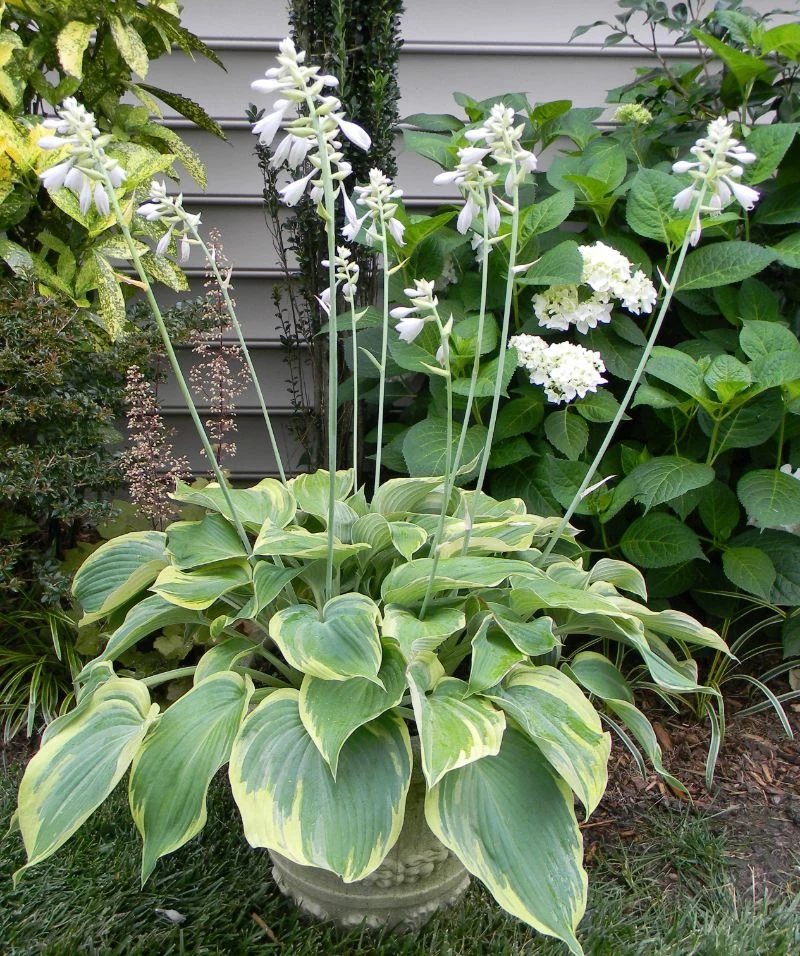
And don’t worry when things go wrong. It happens! Yellowing, soggy leaves usually mean you’re overwatering. Yellow and crispy leaves mean you’re underwatering. If you see pests like aphids, a strong blast of water from a hose is often enough to knock them off. If they’re stubborn, some insecticidal soap from a garden center will do the trick—just be sure to spray in the morning or evening, not in the hot midday sun.
A Quick Note on Safety
Your beautiful garden should be a joy, not a hazard. A quick heads-up for pet owners and parents: many common plants like lilies (for cats) and sago palms (for dogs) are toxic if eaten. Always do a quick search on the ASPCA’s plant database online before you buy. Also, make sure your water runoff doesn’t create a slippery mess or stain your deck. Use deep saucers and empty them after watering.
Creating a thriving container garden is a skill, but it’s one you can absolutely learn. Start small. Pick one pot and one plant that’s right for your light. Give it a good home. Pay attention to it. Before you know it, you’ll have a little slice of living beauty that brings you joy every time you step outside.
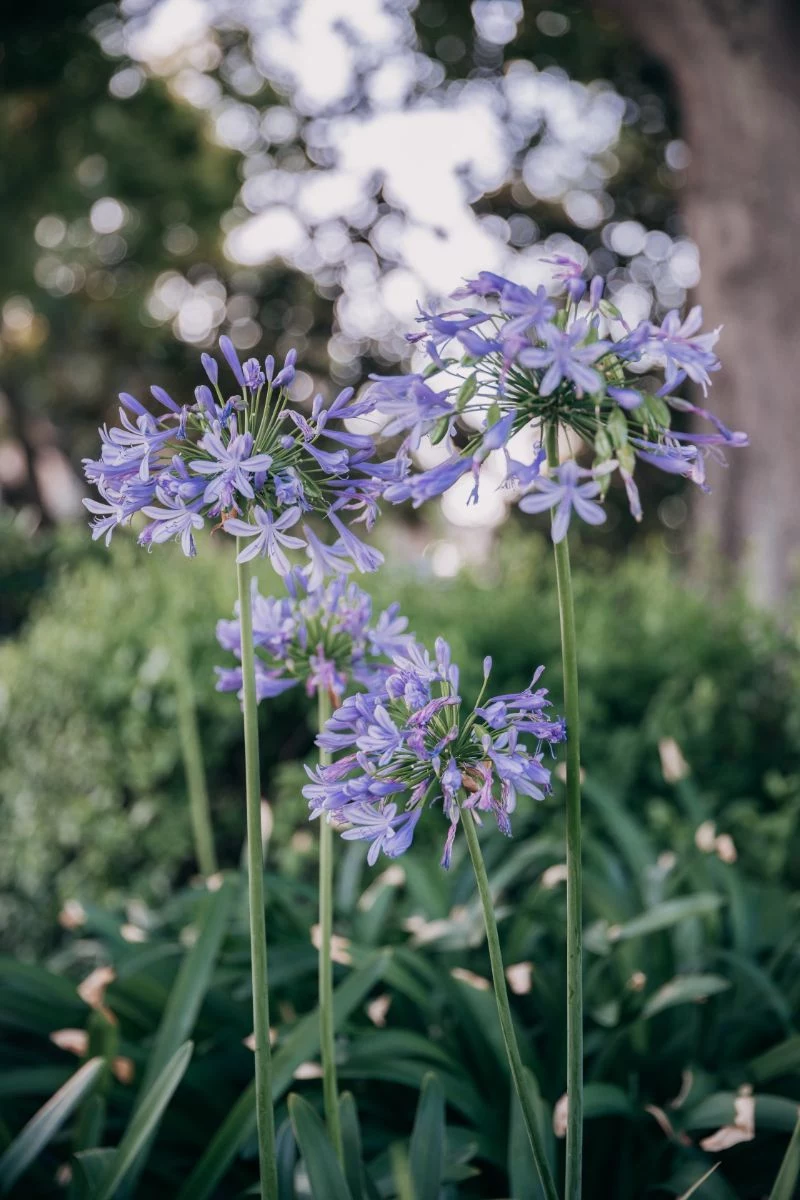
Inspirational Gallery
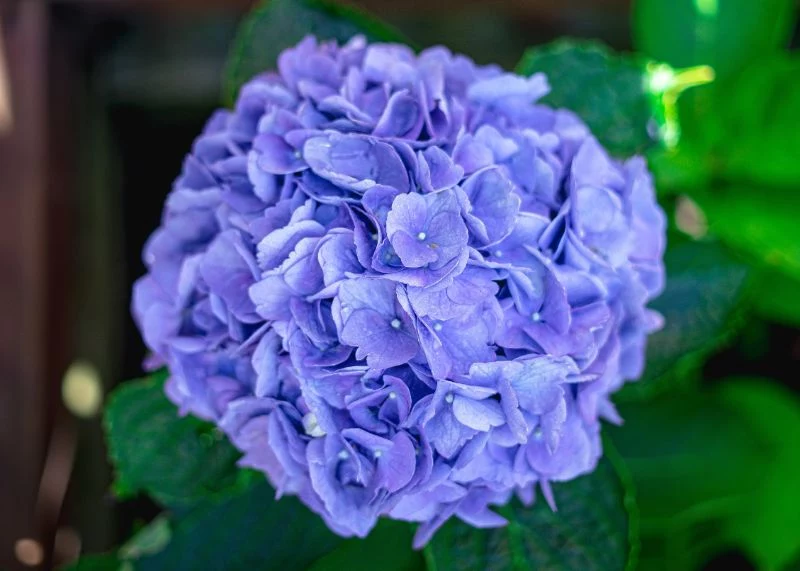
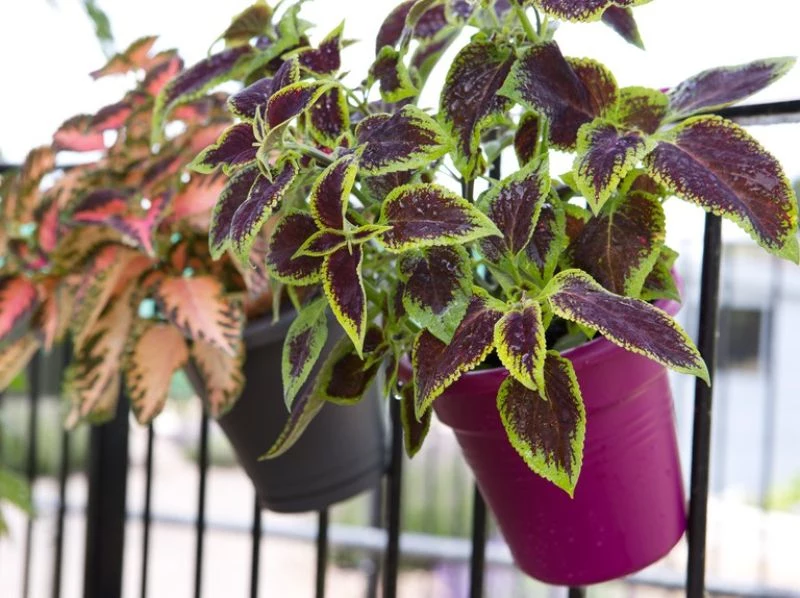
Store-bought potting mix is a good start, but creating your own ‘super soil’ gives container plants a real advantage. For a mix that retains moisture yet drains well, combine:
- One part high-quality potting soil (like Proven Winners Premium Potting Soil)
- One part compost or earthworm castings for slow-release nutrients
- A generous handful of perlite per gallon of soil to keep things light and airy.
The result? A perfect foundation that helps prevent both drought and root rot.
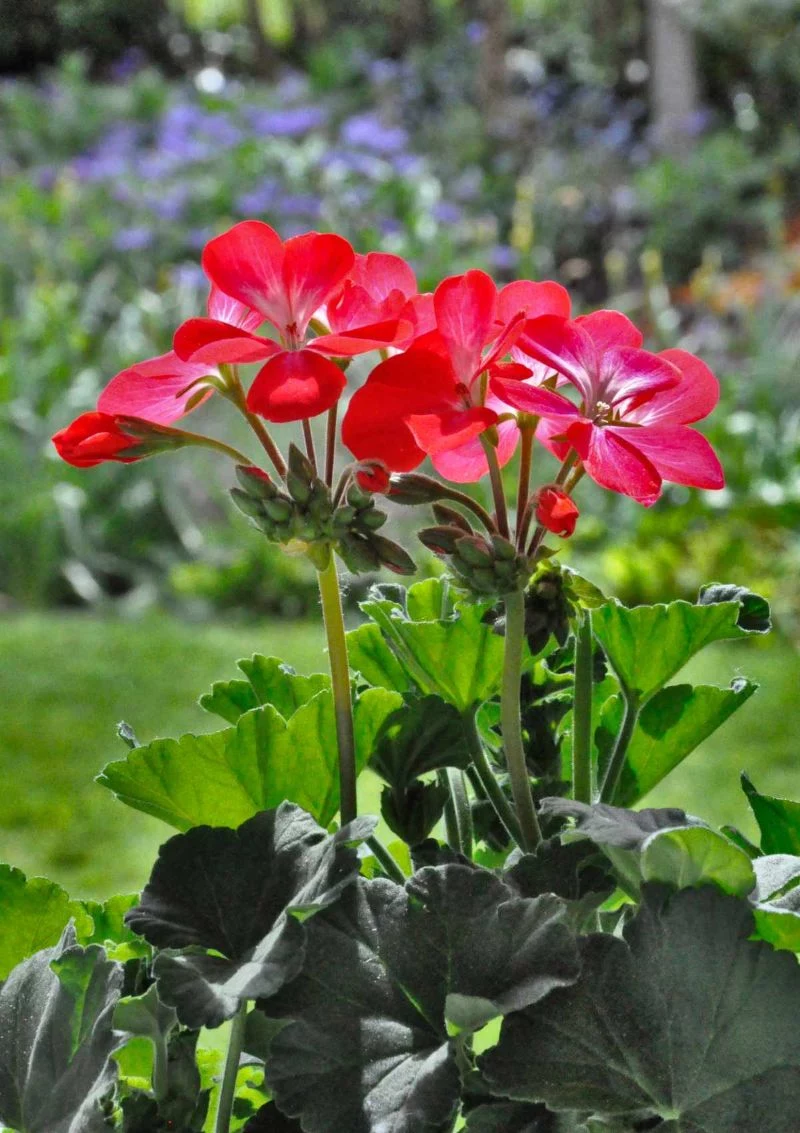
Standard Terracotta Pot: Classic look, porous walls help prevent overwatering. Downside: Dries out very quickly in direct sun, may require daily watering.
Glazed Ceramic or Plastic Pot: Retains moisture much longer, reducing watering frequency. Great for thirsty plants like hydrangeas or for busy gardeners. Just be extra sure the drainage holes are clear.
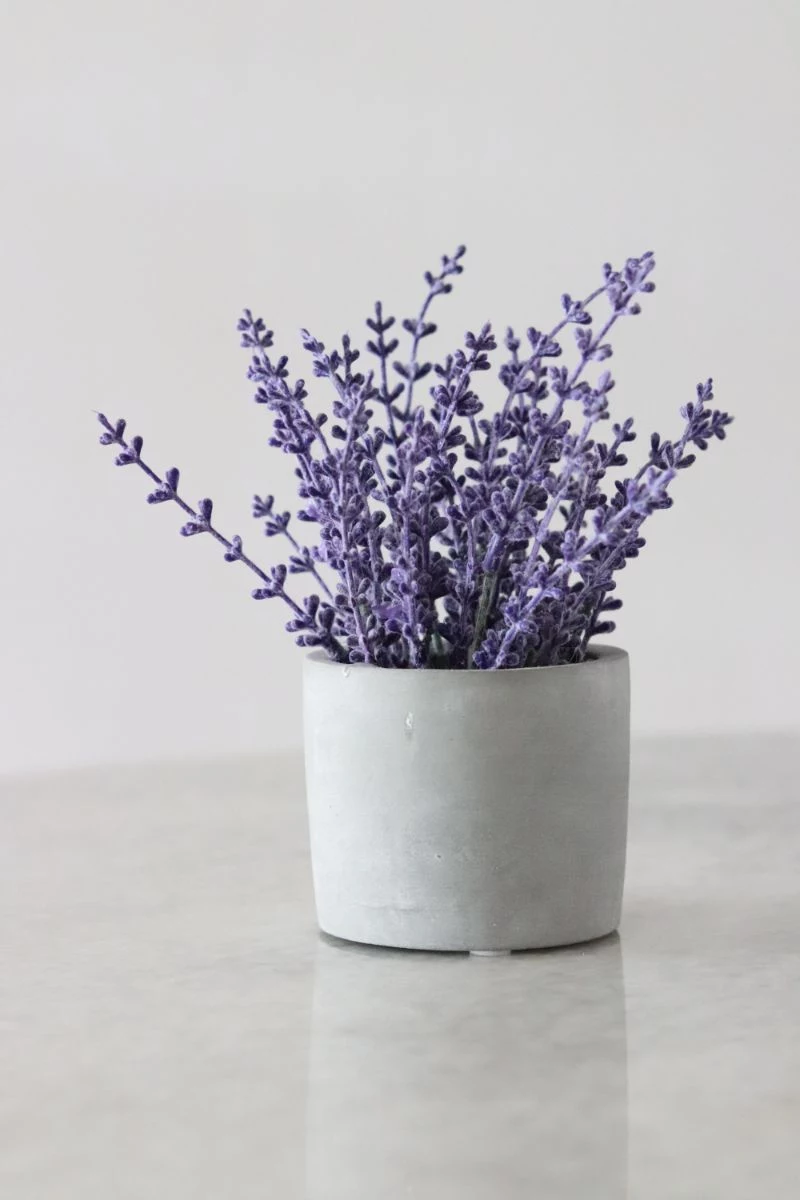
On a hot, windy day, a plant in a 10-inch container can lose up to two quarts of water through evaporation and transpiration.
This illustrates why container gardening is a different ball game. Unlike plants in the ground, their roots can’t seek out deeper, cooler soil. Grouping pots together can create a more humid microclimate, slightly reducing moisture loss for all of them.
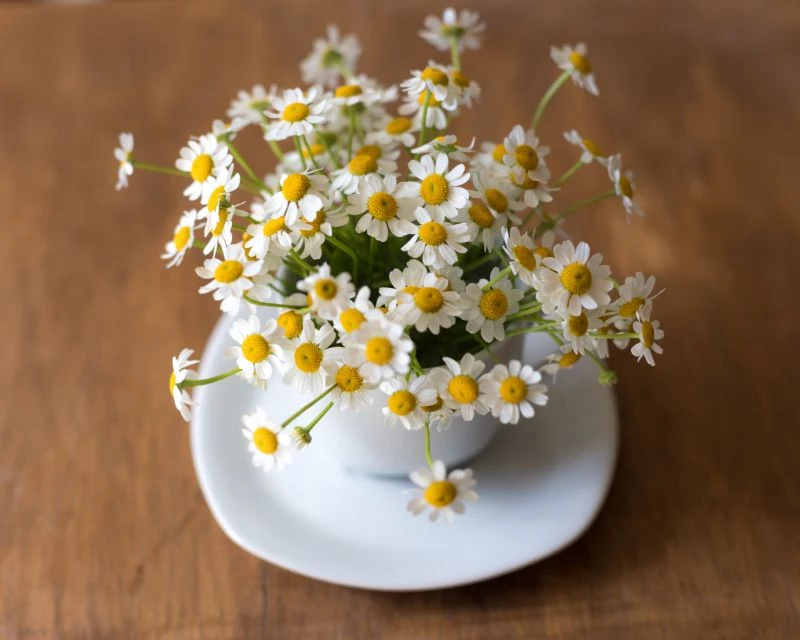
Wondering how to create that lush, overflowing look you see in magazines?
The secret is a simple design formula: ‘Thriller, Filler, and Spiller.’ For each large container, choose one tall, eye-catching ‘thriller’ (like a cordyline spike), several mounding ‘fillers’ to add bulk and color (like coleus or geraniums), and a few ‘spillers’ to cascade over the edge (like sweet potato vine or Supertunia Vista petunias).
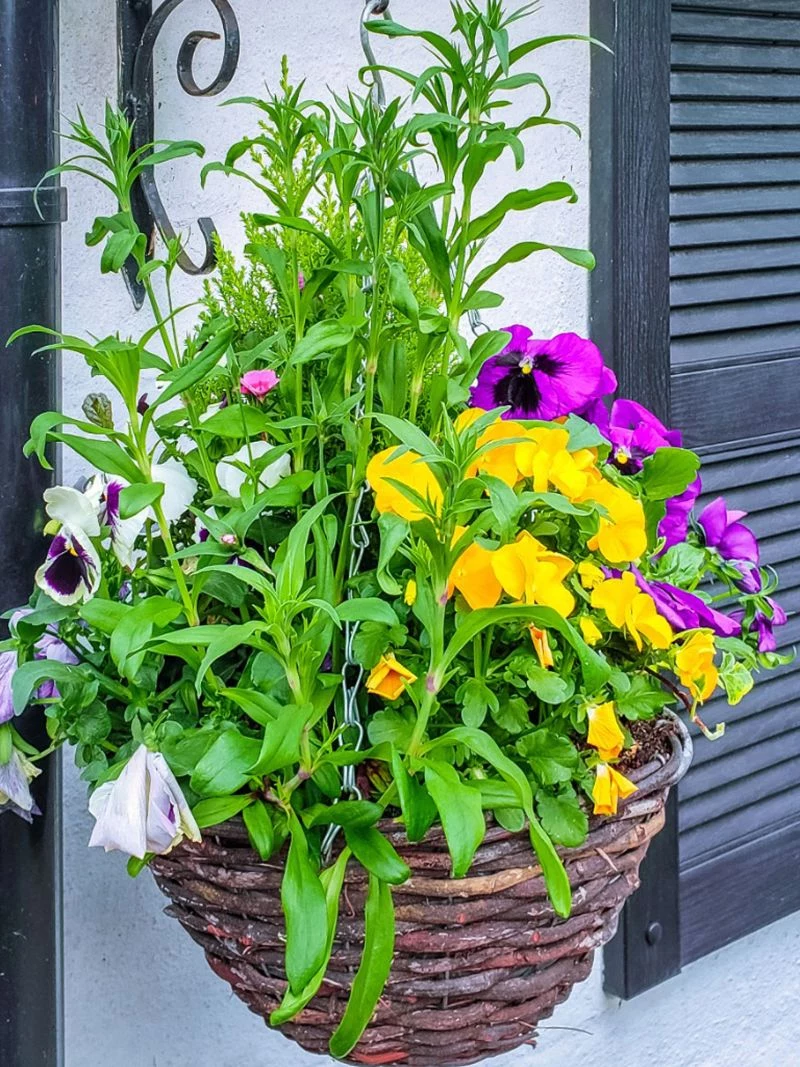
Beyond color, consider scent to create an immersive entryway. A pot of lavender by the door releases a calming aroma every time you brush past. Tucking some creeping thyme between other plants will release a savory scent when watered. For evening enjoyment, the sweet fragrance of night-blooming jasmine or flowering tobacco plant (Nicotiana) can transform your porch into a sensory retreat after sunset.
- Attracts bees and butterflies to your porch.
- Provides continuous blooms from spring until frost.
- Incredibly heat and drought tolerant once established.
The plant? Lantana. It’s a nearly indestructible choice for a sunny porch, thriving on a bit of neglect and rewarding you with clusters of colorful flowers that often change hue as they age.










